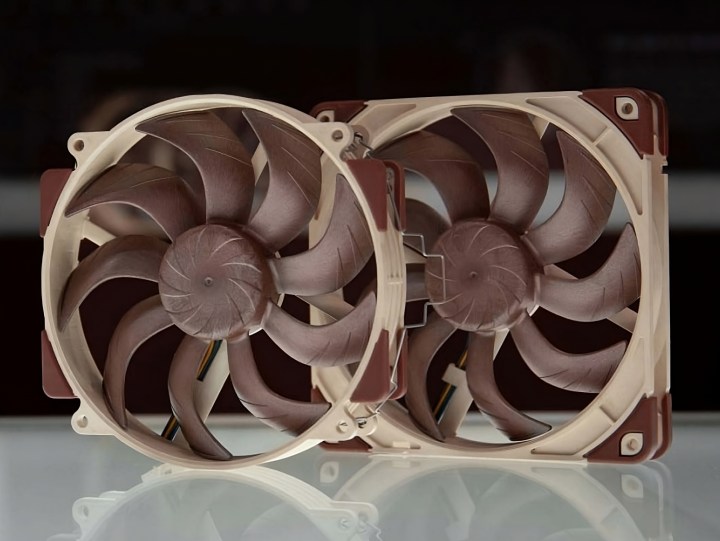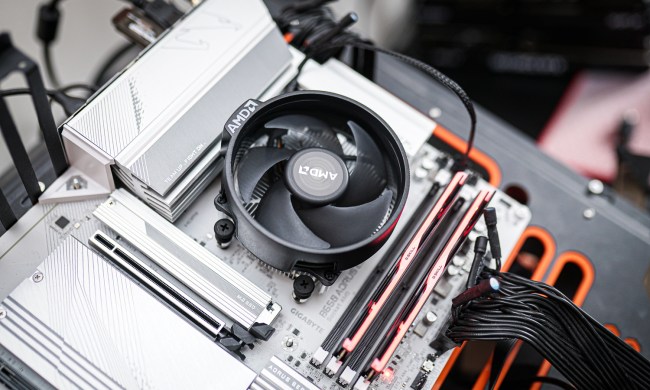
The cooling system in your computer involves several fans and heatsinks all working together to get the heat from its various components out of the case as fast as possible. A PC that runs too hot will be loud and it won't perform at its best. There are a lot of things you can do to improve your PC cooling, though. Here are some ideas to get you started.

Upgrade the CPU cooler
Every PC has a CPU cooler, but most computers — especially affordable pre-built PCs — don't have a very good CPU cooler. It might be good enough to keep your processor from overheating, but stock and cheaper coolers just don't have the size or the power to really let your processor hit its highest performance, and even if they do, the noise levels are far from ideal.
Upgrading your CPU cooler can go a long way to improve your PC cooling and bring down noise levels.
Step 1: To upgrade your CPU cooler you need to buy one that's compatible with your processor and its motherboard socket-type. You can find our what yours are by using Windows Task Manager, and Googling your CPU name. Alternatively, look at your PC's specifications from when you bought or built it.
There are a lot of different CPU coolers, from big air coolers with giant heatsinks and fans, to more-compact liquid AIO watercoolers. Anything will be an upgrade over Intel or AMD stock cooling, but the more powerful the cooler, the quieter it can run and the cooler your CPU will be, potentially letting you overclock it if you wish.
For advanced PC builders, there's also custom watercooling loops to consider. They're easier to setup than you might think, but they're definitely on the extreme-end of the PC enthusiast scale.
Step 2: Actually performing the CPU upgrade is very different for each cooler, but know that it's not a hugely complicated process and anyone can do it with a little time, patience, and care. We have details about upgrading your computer in our how to build a PC guide. You'll find more information on CPU cooler installation there.

Upgrade the graphics card (cooler)
If you're a gamer, your graphics card will always be working hard while you're fragging enemies. That means it can get pretty hot, and if your GPU cooler isn't particularly powerful or quiet, it can generate a lot of noise. There are custom GPU coolers you can use to replace your existing graphics card cooler, like the Rajintek Morpheus. NZXT also makes the G12 bracket which lets you attach an AIO CPU watercooler to a GPU, but it's pretty tricky to do safely.
The most extreme way to upgrade your GPU cooling is to add it to a custom watercooling loop. In each case the cooling performance and noise levels are likely to be far better than the stock cooler, but whatever custom cooler you pick, you will completely void your warranty installing it.
For most gamers and PC enthusiasts, upgrading the graphics card will be the safer option — even if it won't be the cheapest. If performance is what you're after, just buy a better GPU than what you have — just make sure it has enough VRAM. If noise levels are more important, however, then make sure to buy a large, custom GPU with advanced cooling.

Upgrade the fans (or just add more!)
Your CPU and GPU cooler can only work with the air that they're given. If there isn't any cool air getting into the case, and nothing to blow the hot air out, they'll just keep recycling the same warm air until everything is loud and hot and that's no good for anyone.
Upgrading your system fans can help improve noise levels and temperatures by improving the cycle of airflow. You want at least one intake fan and one exhaust fan, but more can help. Larger fans are quieter, so 120mm tend to be quieter than 90mm, and 140mm are quieter than 120mm. If you have water-cooling radiators, make sure that their fans have a high static pressure to keep the air moving through the fins and ideally make sure any intake fans are behind dust filters.
If you think your fans are good enough, it might be worth double checking. New fan designs made from new materials were released in 2023 and have some impressive performance advantages over everything that came before.
A little tip: If you want to minimize the amount of cleaning out of your PC you do, ensure you have more intake fans than exhaust fans. That way there's more air moving into the case than out, which in turn drives air out of the case through all the small nooks and crannies. If the opposite were true, those little holes would pull in dust and debris with the air, increasing dust build up over time.

How to improve your PC cooling for free
Although the easiest way to improve your PC cooling is by upgrading the components that aid in cooling, there are some things you can do that don't cost anything — except a little time.
Step 1: Give your PC interior a good clean. Clear any dust from the dust filters, dust the inside and use compressed air to clean the gaps between heatsinks. Dust buildup can act as an insulating layer, inhibiting the cooling performance of your coolers, causing temperatures to rise and fans to work harder, leading to more noise.
Step 2: Underclocking or undervolting your CPU or your graphics card can help reduce noise levels and improve temperatures by lessening the heat output by that component.
Step 3: Opening a window might seem a little too simple, but it does work. The same goes for turning on an air conditioner. Making sure the room your PC is in is as cool as possible will help improve its cooling potential and keep noise levels down.
Now that your PC is running cooler and quieter, how about some more tips on how to speed up your computer?



